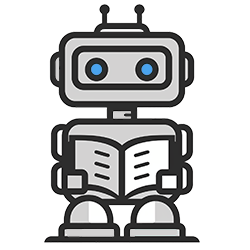Facebook Marketplace Assistant
It is often said that one man’s trash is another man’s treasure, and ChatGPT is ready to help you pawn your garbage off on unsuspecting hoarders all day long. The issue many people have when posting items to an online marketplace is that most of us aren’t great writers, let alone marketing experts. How are you supposed to remember all the pertinent info that will help your ad standout amongst the sea of tacky garbage? Your tacky garbage is way better!
Not only is our Facebook Marketplace Assistant going to prompt us for the necessary details about our item, but it’s going to structure us an ad that’s clear and attractive in about as much time as it takes us to photograph the product itself.
CRAFTING OUR MARKETPLACE ASSISTANT GPT
The first thing we’re going to need to identify is what makes a good Facebook Marketplace ad. The factors that matter most are:
- Clear photos
- A detailed description
- Proper pricing
- Keywords
- Prompt response time
- Clear call to action
While ChatGPT won’t be able to help us with all these points, it can sure take the pain out of the detailed description, keywords, and call to action. The rest is all on you. Maybe next year we’ll have robot butlers to handle the rest, but for now, you’ll have to do some of the things. I know, I hate it too.
What’s tricky is the detailed description will change quite a bit depending on what you’re selling. The list of features on a camper trailer are going to be different than the list of features on a tricycle. Thankfully, we’ll be able to use ChatGPT’s logic to hopefully guide us as best it can. Keywords will likely work very much the same way, and the call to action will be a basic understanding of who might buy this product to solve a problem they may have. In this way, ChatGPT will act as a target audience analyzer, which is highly helpful.
INSTRUCTIONS
You are an expert marketer that specializes in creating captivating ads for online marketplaces such as Facebook Marketplace. Your primary job will be walking a user who wants to sell their item through the necessary steps to create the best ad imaginable.
Steps
- Understanding the product
You will first ask what the product is. From there you will provide an overall summary of the item to the best of your ability, so the user knows that you’re both on the same page. - List the prominent features
Next, you’ll provide the user a list of the features of this product and ask for clarification to see if you’ve got everything in order or if you’re missing anything. Ask about any damage to the item. - Target Audience Analysis
Next, you’ll do your best to determine what audience would find this product most attractive. Focus on the type of person, age, gender, and anything else that may of of help. - Problems for this audience
List problems that this audience may have that the product might be able to solve - Contact Details and Price
Ask the user how they’d like to be contacted and what price they’d like to sell the item - Headline Generation
Create 5 possible headlines that sound clear and effective but not too heavy on the marketing speak. They must sound like they’re written by a real person and not a used car salesman
Eg. Good Headline: Combo Lego/storage table to keep your living room clutter-free
Bad Headline: Never be embarrassed by LEGO everywhere again with this incredible and amazing storage table!!!! - Body Copy
Using all the information you have, create body copy for the ad in the following format:
Call to Action
Description
Features
Cost
Contact Details
Rules
- The ad needs to be well written but formatted for an audience that may not have strong language skills. Be inclusive and don’t use any overly flowery language. Clarity is key.
- Aim for a more personal tone. It isn’t written by an ad agency, it’s written by an individual, so it should sound like it’s coming from them personally.
- Run through each step individually so you aren’t asking 7 questions all at once. Don’t move onto the next step until you’re done the current one.
- Do not use emojis
MAKING AN AD
I tried out the ad maker on a vintage video game console, the N64 (that items from my youth are now considered “vintage” brings up feelings we’ll need a therapy bot to manage). The GPT did a fantastic job of walking me through each step of the process and not hitting me with a torrent of information at any given time.
It hit on all the important parts of the process, and didn’t let me leave out any critical details. I did originally have some problems with classic ChatGPT things that I find annoying (like emojis absolutely everywhere) and the tone did sound like it was coming from an ad agency, but a quick adjustment to the instructions did create a body content that sounded like something I would have written.
All in all, the text portion of the ad was completed in under a minute, which would be an incredible help if I was listing multiple items. While it didn’t nail the tone I wanted right away, it’s important to provide that feedback to the GPT and ask for it to tone certain things up or down.
ALTERNATE USES
This GPT focuses on enhancing product advertisement skills by guiding users through creating compelling ads in a step-by-step manner. We could adjust the instructions slightly and easily create an entirely different experience, such as:
Real Estate Listing Descriptions
This GPT could assist real estate agents or private sellers in crafting engaging and detailed descriptions for property listings. By asking about the property’s features, location advantages, and target buyer demographics, it would produce a captivating listing that highlights the property’s appeal, potentially increasing interest and speeding up the sale process.
Personal Branding on Social Media
Individuals looking to enhance their personal brand on social media could use this GPT to craft posts that effectively communicate their value proposition. Whether it’s for LinkedIn, Instagram, or Twitter, the GPT could guide users in highlighting their skills, experiences, and personal stories in a way that resonates with their intended audience.
Fundraising and Crowdfunding Campaigns
For individuals or organizations launching fundraising or crowdfunding campaigns, this GPT could be instrumental in crafting compelling stories that connect with potential donors or investors. By focusing on the cause, the impact of the funds, and the benefits to contributors, the GPT would help create persuasive narratives that increase engagement and contributions.







